The 2020-2021 turtle season has been highly successful for Lady Elliot, boasting the highest number of tracks since our 2017 season! So, to kick off this blog, we wanted to answer some of the most frequently asked questions about turtle season on LEI and share some numbers, including this one: 33,000 hatchlings!
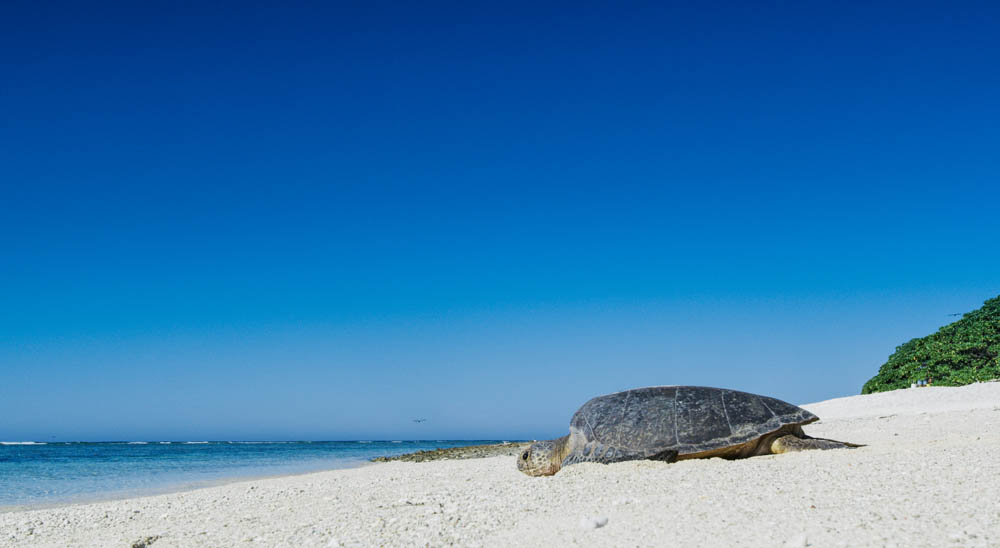 Photo Credit: Ben & Di
Photo Credit: Ben & DiWhat is turtle season?
Turtle season is the time of year that we see both Green sea turtles (Chelonia mydas) and Loggerhead turtles (Caretta caretta) making their way out of the water and up onto our beaches to deposit their eggs into the sand. The season begins each year in late October and extends until roughly April or May (inclusive of hatchlings).
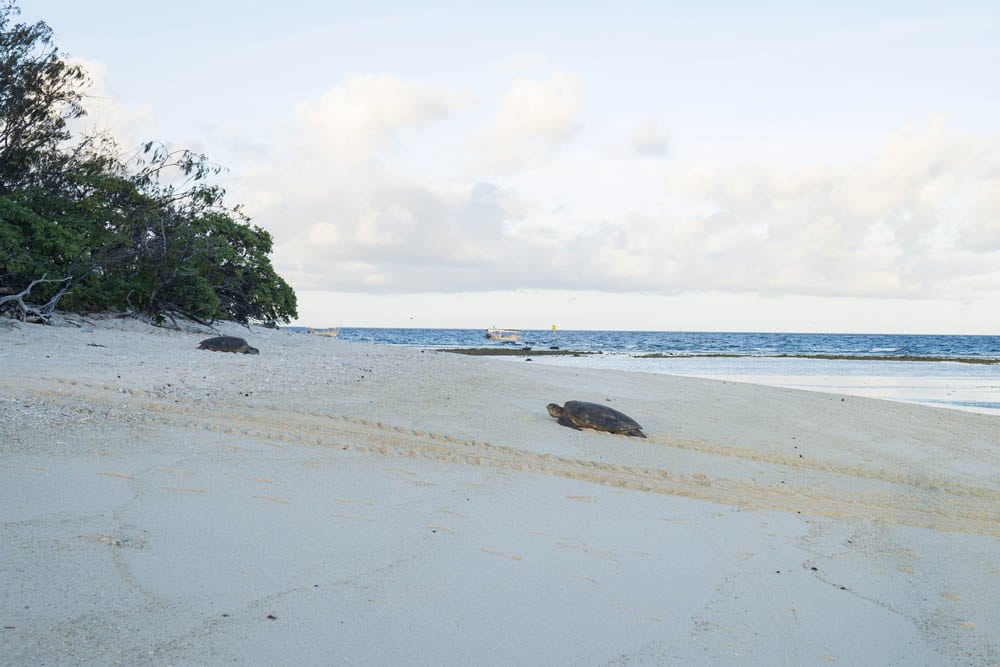 Photo Credit: Narelle Bouveng
Photo Credit: Narelle Bouveng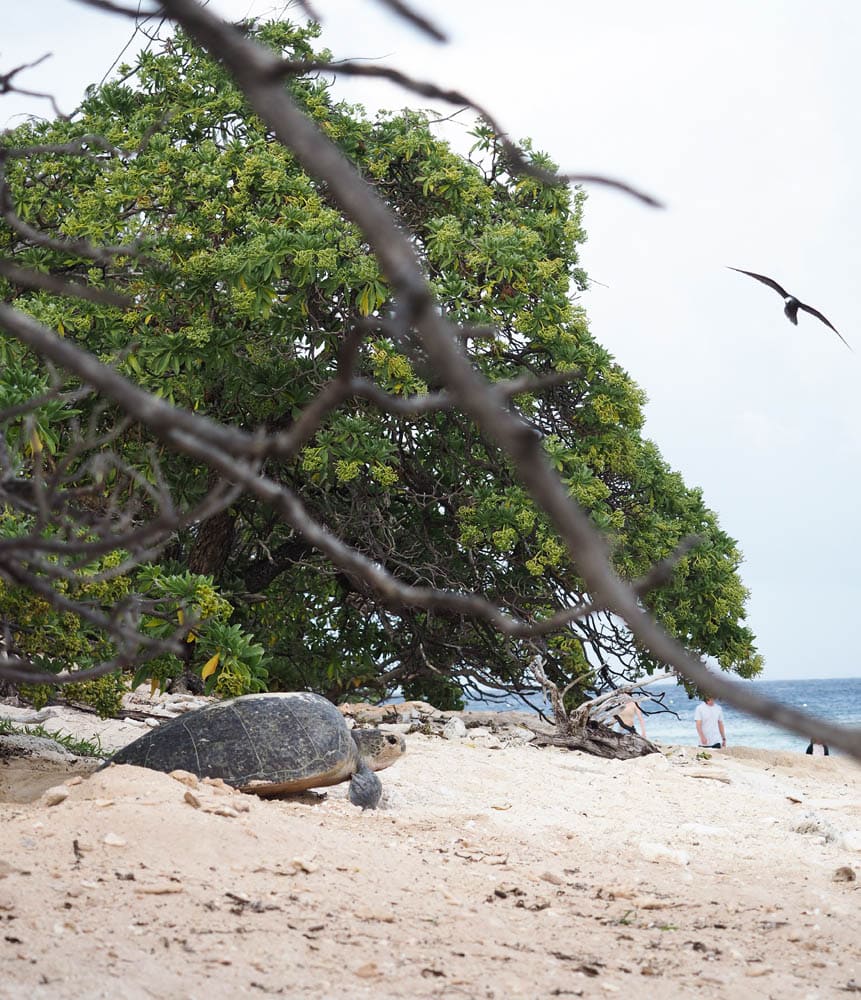 Photo Credit: Jacinta Shackleton
Photo Credit: Jacinta ShackletonWhat does the process involve?
On the high tide each night, large female turtles make the slow and cautious journey from the ocean to the sandy beaches of Lady Elliot. The first stage of nesting can be very intimidating for the turtles, so they are constantly scanning for danger as they manoeuvre their heavy bodies up the beach.
Once the female reaches the top of the beach, she will begin the body-pitting phase, using all four flippers to clear away any dry sand or debris, which will usually last for roughly 40 mins – 1 hour. After the completion of the body pit comes egg chambering, during which time the female will stop using her front two flippers and switch to her rear two, scooping down into the sand to create a pear-shaped egg chamber. When the egg chamber is completed, she will deposit her eggs into the sand which takes anywhere from 30 mins – 1 hour.
The egg chamber is then filled in with sand and compacted down to ensure any weight on top of the nest will not damage the eggs. The covering can last for quite some time but once complete, the female will return to the safety of the ocean. The eggs will remain in the nest for around 7-8 weeks and will generally hatch at night as the temperature of the sand drops, signaling to the hatchlings that it is safe for them to make their escape!
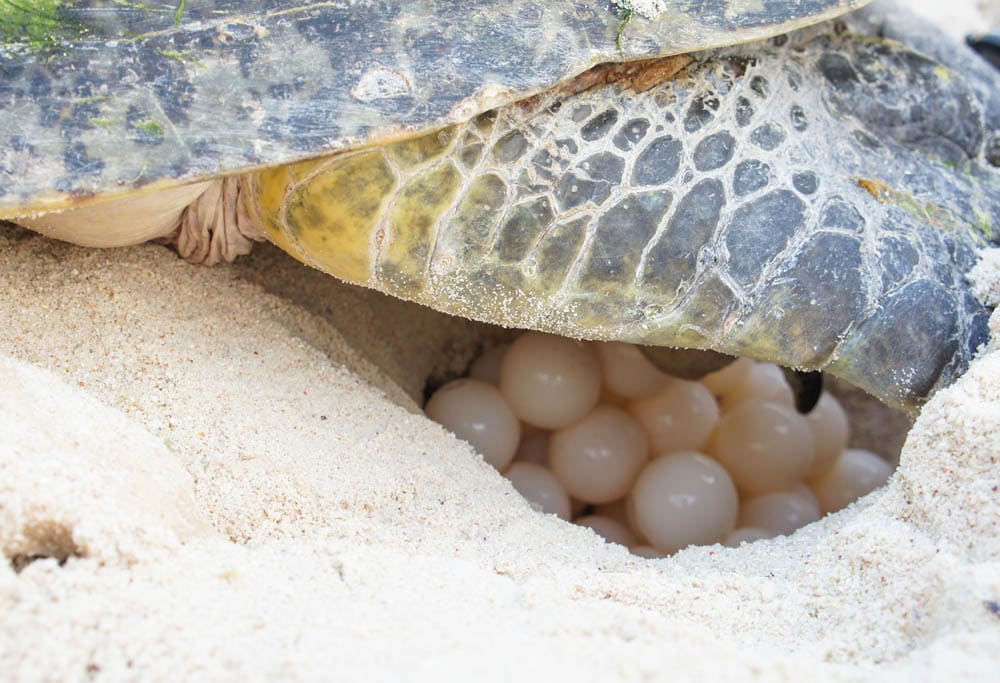 Photo Credit: Jacinta Shackleton
Photo Credit: Jacinta ShackletonA few important things to remember:
- Building a good nest is the only parental care provided by these reptiles which means they can be extremely fussy! Individuals will move multiple times during the process if anything goes wrong, e.g., hitting a tree root, disturbance from humans or the sand being too dry.
- Please attend our on-island “Turtle Update” when visiting during turtle season to best understand how to interact with these animals and the ideal locations to visit.
- Dull yellow or red torches are recommended for turtle watching, but remember it is best to turn off all lights once you locate a turtle nesting. If you have a bright torch, shine it through your clothing to reduce its intensity.
- If you’re unsure of the guidelines, err on the side of caution and give the turtle as much space as possible, after all the more comfortable the turtle is, the better the chance it will successfully nest.
- Stay out of sight of the turtle to ensure she is not startled
- During egg laying, you are able to observe at a distance of around 1m but be careful of the edge of the nest as it is very delicate!
- Flash photography is not advised at any stage of the nesting process other than egg laying, with the flash needing to be down low to minimise disturbance to the turtle. Flash photography is not to be used around turtle hatchlings as it can cause confusion.
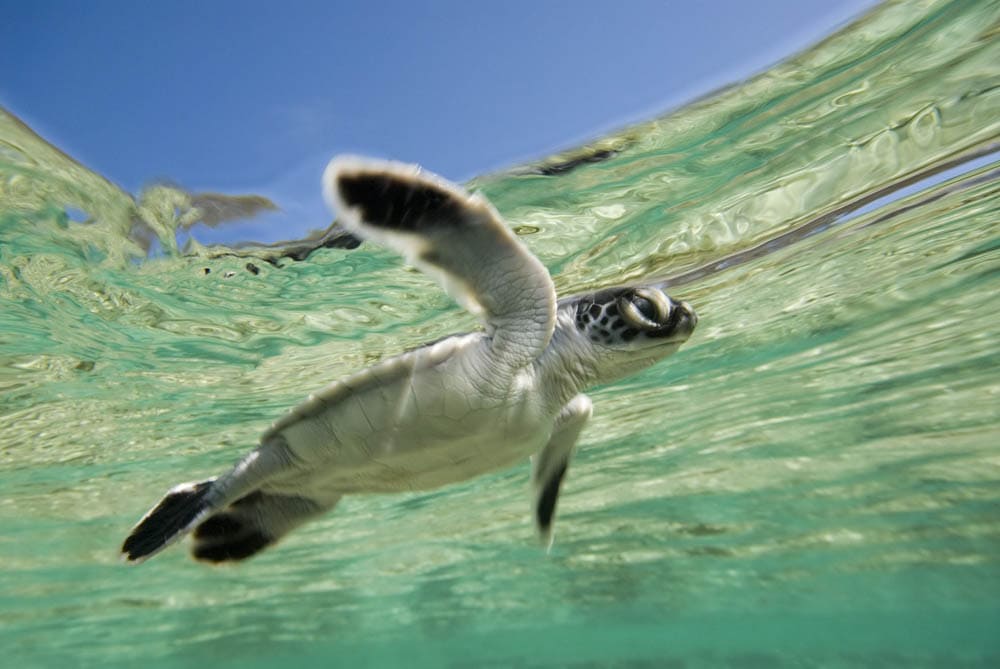
Statistics for 2020-2021:
- 1,459 tracks counted
- 91 confirmed nests
- 150 likely nests
- 1,416 Green tracks
- 43 Loggerhead tracks
- An estimated 33,000 hatchlings!
Distances we advise:
- 10-15m or more for stage one (Turtle making its way up the beach and Body-pitting)
- 5-10m for stage two (Egg-chambering)
- 1-2m for stage three (Egg-laying)
- 3-5m for stage four (Filling in and returning to water)
On the Southern Great Barrier reef, it has also been recorded that there is an upward trend in the Green turtle population. This is fantastic news as it demonstrates a strong response to conservation measures that have been put in place since the commercial harvesting of sea turtles. Observing nesting turtles is an incredible experience and something everyone should do at least once! When visiting Lady Elliot during the season, please attend our Turtle update on the night of your arrival and take a peek at our signage in the resort and on the beaches. Happy Turtle spotting!

 Snorkel & Dive
Snorkel & Dive Sustainability
Sustainability